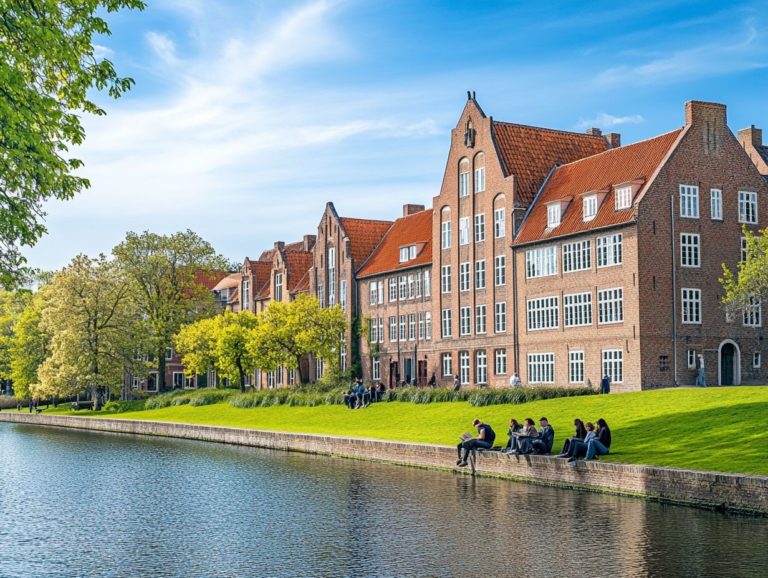Cultural Differences to Expect in Sweden
Sweden presents a mix of cultures, woven with unique social norms and traditions that profoundly influence daily life.
You ll find a refreshingly straightforward communication style, a strong emphasis on personal space, and the delightful landscape of traditional Swedish cuisine waiting to be explored!
This guide invites you to delve into the nuances of Swedish dining customs, the vibrant celebrations that punctuate the calendar, and the nation s unwavering commitment to gender equality.
Uncover the customs and traditions that shape Swedish society, revealing what truly sets it apart in a remarkable way.
Contents
Key Takeaways:
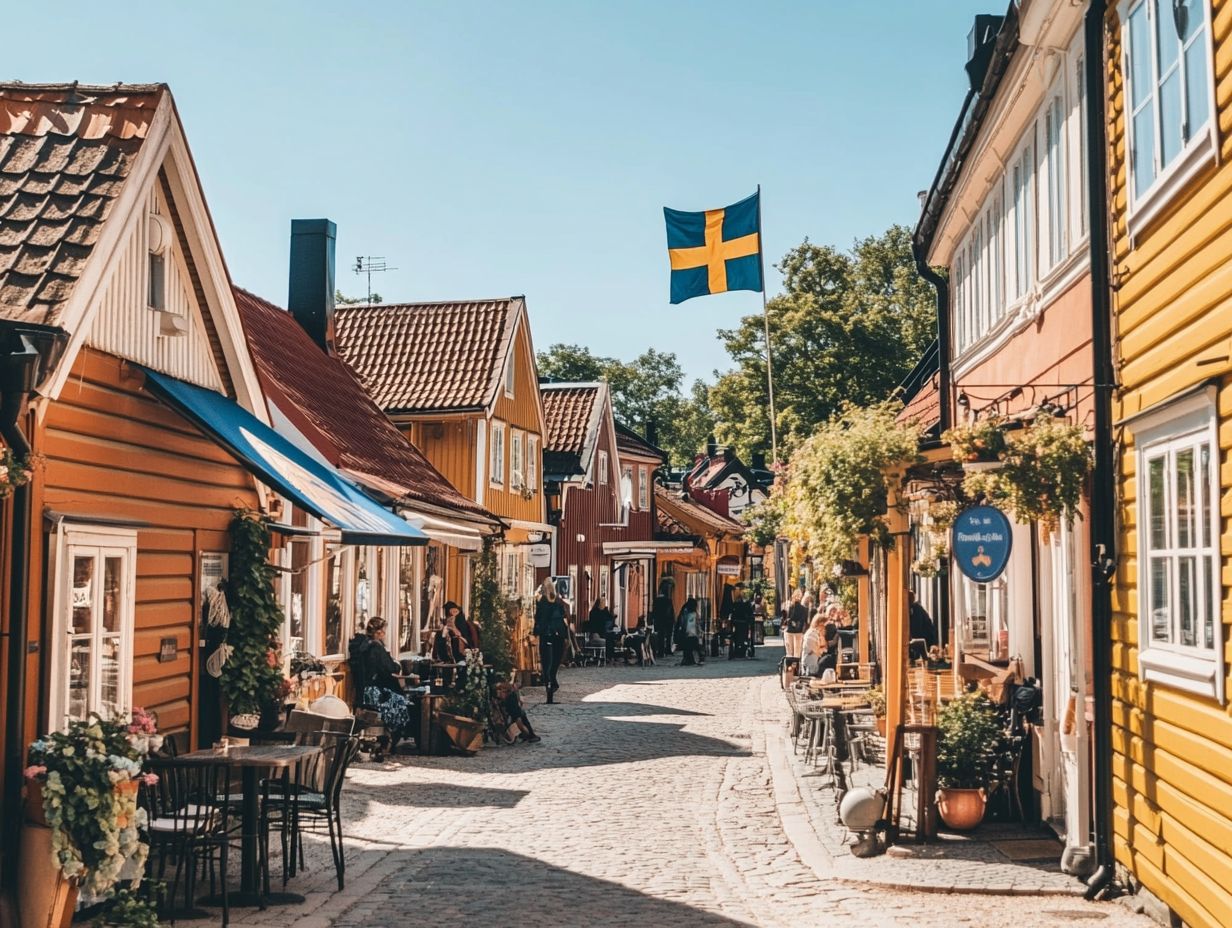
- Direct communication and respect for personal space are valued in Swedish society; it’s important to be straightforward and mindful of personal boundaries.
- You must try traditional dishes like meatballs and herring! Dining etiquette emphasizes using utensils and not talking with your mouth full.
- Sweden celebrates major holidays such as Midsummer and Christmas, with customs often including gathering with family and friends to enjoy traditional food and drinks.
Overview of Swedish Society
Swedish society is a beacon of progressive values, characterized by extensive socialized medicine. This means healthcare is provided by the government to ensure everyone has access, showing an unwavering commitment to human rights quite a contrast to the cultural nuances often found in America.
This dedication is evident in Sweden’s robust healthcare system, which prioritizes accessible and equitable medical care for everyone, irrespective of income. Unlike the often exorbitant costs and complexities one might encounter in the U.S., citizens in Sweden enjoy a simpler, more inclusive approach to health services.
The efficient public transportation network not only champions sustainability but also significantly enhances connectivity, allowing you to navigate both urban and rural areas with ease.
Sweden’s approach to parental leave is equally impressive, granting both parents ample time to bond with their newborns an essential component of a healthy work-life balance.
Sweden’s policies on property rights and the respectful treatment of refugees show a commitment to fairness and inclusion, further exemplifying the values that underpin daily life in Sweden.
Communication and Social Norms
In Sweden, you ll find that communication and social norms are marked by a striking directness and a profound respect for personal space. This approach can feel quite distinct compared to the more informal communication styles you might be accustomed to in America.
Directness and Personal Space
Directness in communication is a defining trait of Swedish culture, where honesty and clarity are highly valued. This straightforwardness often translates into a preference for personal space, which might come across as reserved when compared to other cultures, particularly America.
In Sweden, conversations are typically straightforward and to the point, with minimal small talk aimed at promoting efficiency in interactions. This contrasts with the American style, where casual banter fosters a relaxed atmosphere but can sometimes lead to misunderstandings about intentions.
In terms of personal space, you ll notice that Swedes tend to keep a larger physical distance than their American counterparts, who generally feel more comfortable in closer proximity during interactions.
These cultural differences highlight the importance of understanding how diverse backgrounds shape communication styles and perceptions of space, ultimately influencing the ways people connect with one another.
Food and Dining Customs
Food and dining customs in Sweden are steeped in tradition, showcasing distinct elements such as ‘fika’ a coffee break where people gather and connect that highlights the importance of social connectivity.
This practice stands in contrast to American dining habits, particularly regarding portion sizes and meal structures, offering a fascinating glimpse into cultural nuances.
Traditional Swedish Cuisine
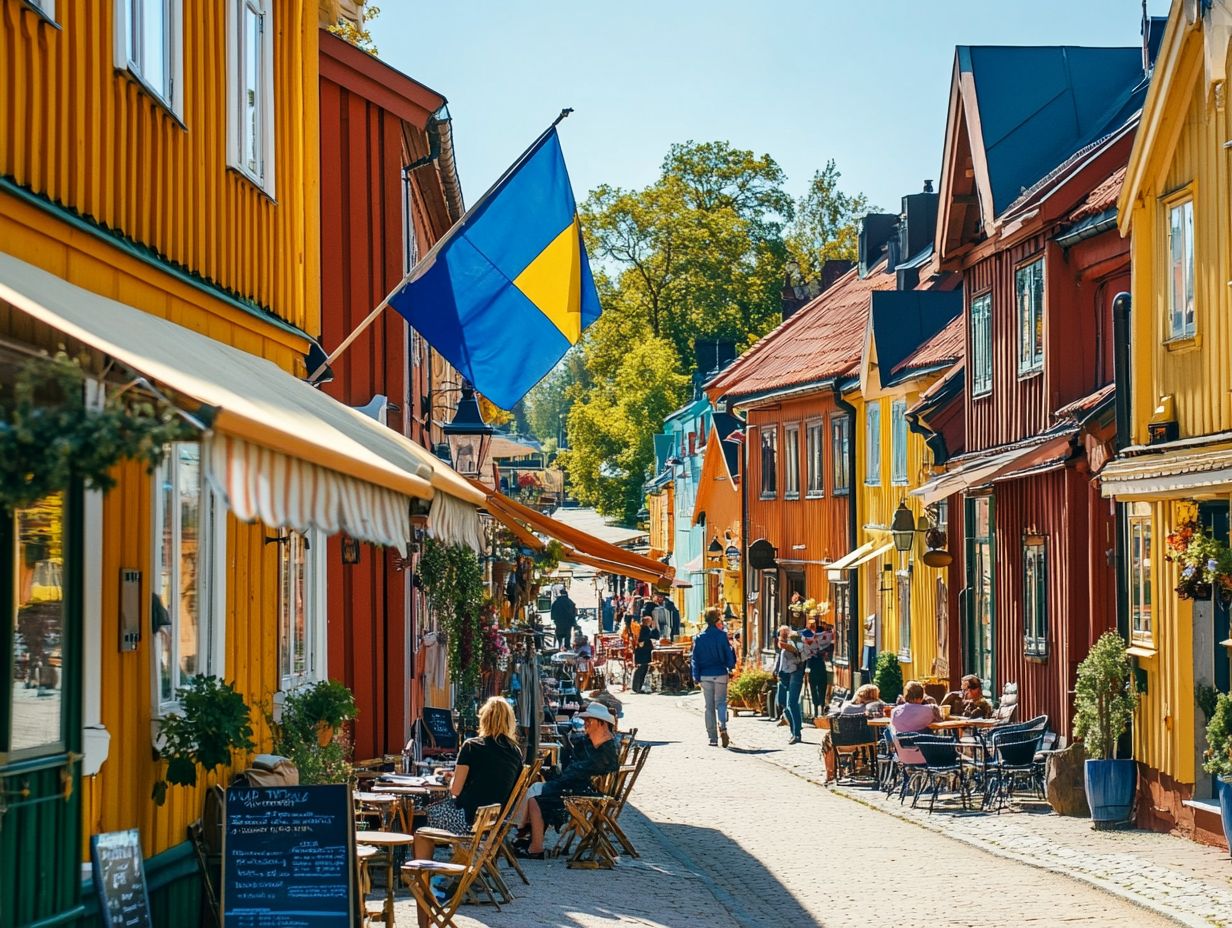
Traditional Swedish cuisine invites you into a world of hearty dishes like meatballs and herring. It offers a captivating glimpse into Sweden’s rich cultural heritage, which stands in stark contrast to the food culture you’ve encountered in America.
These cherished meals often showcase local ingredients such as potatoes, lingonberries, and rye bread. They reflect the seasonal bounty and agricultural traditions of the country. Take Swedish meatballs, for example; they’re crafted from a harmonious blend of ground beef and pork, thoughtfully seasoned with spices like allspice and nutmeg. They are decadently served with creamy gravy and accompanied by a tangy lingonberry sauce.
In contrast, American dining habits often tip toward convenience, with burgers and fries reigning supreme in the fast-food realm. While both cultures celebrate community through food, Sweden s emphasis on home-cooked meals and traditional recipes reveals a profound respect for family and heritage. This distinction highlights the culinary practices that set these two nations apart, showcasing the unique flavors and values each holds dear.
Table Manners and Etiquette
Table manners and etiquette in Sweden balance formality and simplicity. They emphasize politeness and respect during meals, standing in contrast to the more relaxed dining etiquette often found in America.
In Sweden, it’s customary to express gratitude by saying “tack f r maten,” which means “thank you for the food,” at the end of a meal. This straightforward phrase conveys appreciation for the meal and highlights the communal aspect of dining, encouraging everyone at the table to acknowledge the effort that went into preparing the food.
American customs tend to focus less on formal expressions of gratitude, concentrating more on individual choices and preferences. While both cultures cherish the shared experience of dining together, the Swedish practice carries a deeper cultural significance, fostering a sense of connection and respect among diners.
Holidays and Celebrations
Holidays and celebrations in Sweden are a tapestry of vibrancy and diversity. Midsummer stands out as a key communal event, beautifully contrasting with American festivities, which often lean toward individualism.
Major Holidays and Festivals
Major holidays and festivals in Sweden, such as Midsummer and Christmas, beautifully reflect the country’s rich traditions and communal values. These might feel quite distinct from typical American celebrations.
Midsummer, celebrated in late June, marks the longest day of the year. It offers a perfect opportunity for Swedish families and friends to gather, dance around the maypole, and partake in various outdoor activities. Imagine gathering with friends under the midnight sun, singing and dancing while savoring classic dishes like herring, new potatoes, and delightful strawberry cake!
On the other hand, Christmas in Sweden envelops you in a warm, candlelit atmosphere. The festive season begins with the celebration of Advent, the period leading up to Christmas. This leads to an extravagant Christmas Eve dinner featuring treats like julskinka (Christmas ham) and k ttbullar (meatballs).
While American festivities often revolve around fireworks and large gatherings, these Swedish customs emphasize togetherness and a deep connection to nature. This showcases a refreshing approach to holiday cheer!
Customs and Traditions
Sweden’s customs and traditions, like the Medieval Festival, reveal the country’s rich historical roots and cultural depth. This offers a captivating contrast to American traditions that often spotlight diversity and multiculturalism.
This historical festival invites you to dive into Sweden s past. It celebrates folk culture and medieval crafts that connect locals and visitors alike. Emerging from the nation s medieval heritage, these events showcase not only local artisanship but also a community spirit that often takes a backseat in the more individualistic American celebrations.
In contrast, American customs, such as Thanksgiving, focus on themes of gratitude and family gatherings. These sometimes gloss over historical nuances. These cultural reflections provide a window into deeper implications about identity, tradition, and how societies choose to remember and celebrate their stories.
Gender Roles and Equality
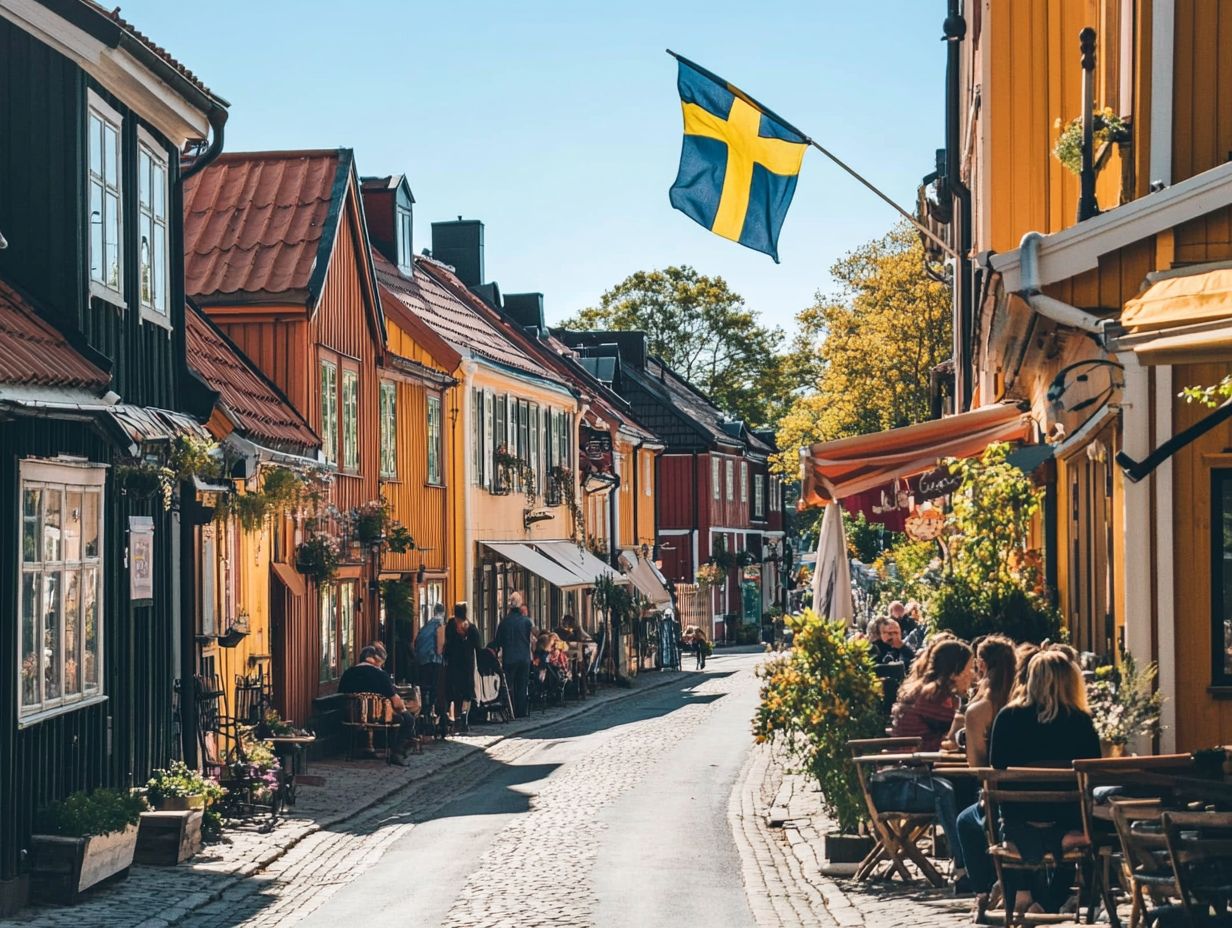
In Sweden, you ll notice that gender roles are becoming increasingly blurred. This demonstrates a strong commitment to gender equality, unlike the more traditional expectations often observed in America, where distinct roles continue to hold sway.
Gender Equality in Sweden
Sweden is widely recognized as a global leader in gender equality. Its policies actively promote equal rights and opportunities, marking a stark contrast to the prevailing gender dynamics in America.
In Sweden, you ll find initiatives like paid parental leave, subsidized childcare, and robust anti-discrimination laws. These cultivate an environment where both men and women can excel in their personal and professional endeavors. The introduction of quotas in corporate boardrooms has bolstered women s representation in leadership positions, fostering a culture steeped in inclusivity and respect.
While the United States has made progress with policies such as the Family and Medical Leave Act, significant gaps persist especially in affordable childcare and workplace equality. The societal implications of these differing approaches are profound, influencing everything from family dynamics to economic growth and ultimately shaping the cultural landscape in both countries.
Expectations for Men and Women
In Sweden, expectations for men and women are more fluid. This allows for greater flexibility in roles quite the contrast to the often rigid expectations seen in American culture.
This evolving landscape encourages you to pursue your interests and career ambitions without being boxed into traditional roles. For instance, it’s quite common to see fathers taking extended parental leave! This societal norm fosters a shared parenting experience.
Meanwhile, traditional American roles impose significant pressure on men to be the primary breadwinners, while women are frequently expected to juggle home and childcare responsibilities.
Both societies are gradually shifting. In America, there s a growing acknowledgment of the importance of shared responsibility within family roles. This shift is fueled by ongoing conversations about work-life balance and equality.
Ultimately, this cultural evolution reflects a broader embrace of diverse identities and choices, creating an environment where both men and women can truly thrive.
Frequently Asked Questions
What are some cultural differences to expect in Sweden?
- Strong emphasis on punctuality and personal space.
- A reserved and egalitarian society.
- A high regard for nature and sustainability.
How do Swedes typically greet each other?
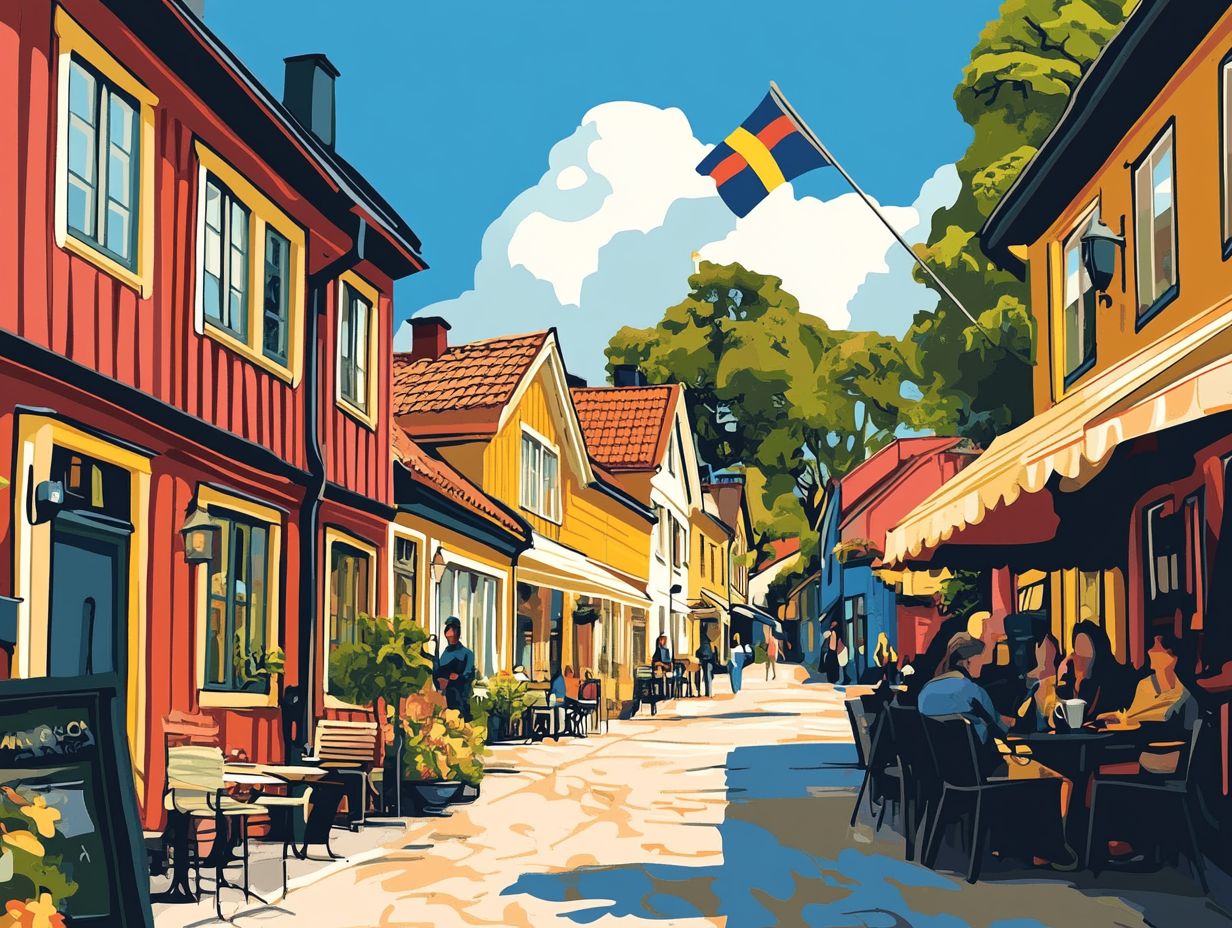
Swedes typically greet each other with a firm handshake and direct eye contact. It is also common to say “hej hej” (hello) or “god dag” (good day) as a greeting.
Is it customary to tip in Sweden?
No, it is not customary to tip in Sweden. Service charges are usually included in the bill, but it is always appreciated to round up the total amount as a gesture of appreciation.
What are some dining customs in Sweden?
In Sweden, it’s common to take off your shoes when entering someone’s home. You should wait to be invited to sit down at the dinner table.
It’s polite to finish everything on your plate and to thank your host for the meal.
How do Swedes approach work-life balance?
Swedes focus on a healthy work-life balance. Family and friends are a priority.
Offices often close early on Fridays. Employees typically take at least five weeks of vacation each year.
What is the Swedish approach to communication?
Swedes communicate directly and honestly. They also value listening and respecting others’ opinions.
Small talk isn’t common, but conversations become more personal after establishing trust.






